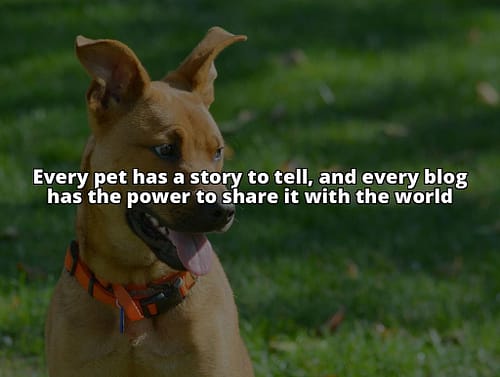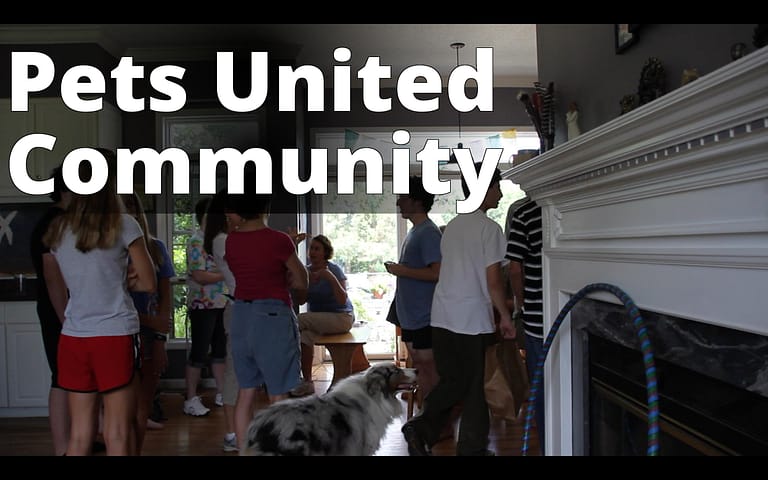Crafting Successful Blogs About Pets: A How-To Guide
What to learn about blogs about pets
- Understanding different pet niches and how to choose one.
- Setting up, creating content, growing audience, and monetizing a pet blog.
- Tips for sustaining and expanding a successful pet blog.
Definition of Blogs About Pets
Are you wondering how to start blogs about pets and make them successful? Blogs about pets are online platforms where passionate pet owners and animal lovers share their experiences, knowledge, and tips related to pets. These blogs cover a wide range of topics, including pet care, training, health, nutrition, and the joys of pet ownership. They serve as valuable resources for both seasoned pet owners and those considering bringing a furry friend into their lives.
Growth and Popularity of Pet Blogging
In recent years, the popularity of pet blogging has soared, reflecting the deep connection people have with their pets. Pet blogs offer a sense of community, support, and entertainment for individuals who adore their animal companions. According to studies by Petpedia, the demand for quality pet-related content has increased significantly. This growth presents a vast opportunity for aspiring bloggers looking to establish a successful presence in the pet blogging sphere.
Understanding the Pet Blogging Landscape
Types of Pet Niches
Pet blogging encompasses a diverse range of niches, including blogs dedicated to dogs, cats, exotic pets, birds, reptiles, and more. Each niche has its unique audience and content focus, catering to the specific needs and interests of pet owners within that category.
Factors to Consider When Choosing a Pet Blog Niche
When selecting a pet niche for your blog, consider your passion, expertise, and the level of competition in that niche. It’s essential to choose a niche that resonates with you personally and aligns with the interests of your target audience.
Researching Popular Pet Blog Topics
Before diving into creating content for your pet blog, conduct research on trending topics within the pet industry. Explore popular keywords, questions frequently asked by pet owners, and emerging trends to ensure your blog stays relevant and engaging.
Setting Up Your Pet Blog
Selecting the Best Blogging Platform for Pet Content
Choose a user-friendly and customizable blogging platform, such as WordPress, Blogger, or Squarespace, that suits your technical skills and content goals. Ensure the platform provides flexibility for incorporating multimedia elements and optimizing your blog for search engines.
Choosing a Domain Name that Reflects Your Pet Blog’s Brand
Select a domain name that is memorable, reflective of your pet niche, and easy to spell. Your domain name plays a crucial role in establishing your blog’s identity and attracting visitors interested in pet-related content.
Designing a Pet-Friendly Website Layout
Create a visually appealing and easy-to-navigate website layout that enhances the user experience. Incorporate pet-themed elements, such as paw prints, pet illustrations, or vibrant colors, to create a welcoming atmosphere for your audience.
Crafting an Engaging About Me Page for Your Pet Blog
Introduce yourself, share your passion for pets, and highlight your expertise in the About Me section of your blog. Personalize this page to connect with your readers on a deeper level and establish credibility as a trusted source of pet-related information.
Real-Life Success Story: From Pet Enthusiast to Influential Pet Blogger
Meet Sarah: A Passionate Pet Owner Turned Blogger
Sarah, a dedicated pet lover, decided to channel her passion for animals into something more meaningful. With her background in digital marketing and a deep love for her rescue dog, Max, she embarked on a journey to create a pet blog that not only shared Max’s heartwarming story but also provided valuable insights for other pet owners.
Finding Her Niche and Building a Community
By focusing on holistic pet care and positive reinforcement training, Sarah quickly found her niche in the competitive world of pet blogging. Through engaging content, captivating images of Max, and collaboration with fellow pet bloggers, Sarah successfully built a loyal following of pet enthusiasts who resonated with her authentic voice and expertise.
Monetizing Her Passion for Pets
As Sarah’s blog grew in popularity, opportunities for monetization arose. By partnering with pet-focused affiliate programs and brands that aligned with her values, Sarah was able to turn her hobby into a profitable venture. Through sponsored content and strategic collaborations, she not only provided valuable resources for her audience but also generated income from her passion for pets.
Sustaining Success and Inspiring Others
Today, Sarah’s pet blog has become a go-to resource for pet owners seeking advice, inspiration, and a sense of community. By staying up-to-date with the latest trends in the pet industry and consistently delivering high-quality content, Sarah continues to sustain and expand her pet blog, inspiring others to follow their passion for pets and pursue their dreams of becoming successful pet bloggers.
Creating Compelling Content for Your Pet Blog
Key Topics to Cover in Pet Blogs
Explore a variety of key topics in your pet blog, ranging from pet care tips, training techniques, health advice, nutrition recommendations, product reviews, and heartwarming pet stories. Diversifying your content keeps your audience engaged and provides value across different aspects of pet ownership.

Enhancing Engagement with Visual Content
Incorporate high-quality images, infographics, and videos into your blog posts to captivate your audience and convey information effectively. Visual content not only breaks up text but also enhances the overall appeal of your blog and encourages social sharing.
By incorporating personal anecdotes, case studies, and real-life examples of successful pet bloggers, you can elevate your pet blog and connect more deeply with your audience. Remember to cite reputable sources and studies to back up claims and provide valuable insights for aspiring pet bloggers.
| Monetization Strategy | Description |
|---|---|
| Sponsored Content | Collaborate with pet brands or companies for sponsored posts or reviews on your blog. |
| Affiliate Marketing | Promote pet products through affiliate links and earn a commission for each sale generated. |
| Display Advertising | Utilize ad networks like Google AdSense to display relevant ads on your blog for revenue. |
| Selling Pet-related Products | Create and sell your line of pet products, merchandise, or e-books to your blog audience. |
| Offering Pet-related Services | Provide services like pet sitting, grooming, training, or consultations to your readers. |
Common Questions
Who writes blogs about pets?
Pet owners, veterinarians, animal behaviorists, and pet enthusiasts.
What makes a good blog about pets?
A good pet blog includes helpful tips, cute stories, and engaging photos.
How can I start my own pet blog?
Choose a platform, pick a niche, create quality content, and engage with readers.
Isn’t it hard to stand out in the pet blogging world?
While it can be competitive, unique content and a strong voice can help you stand out.
What should I do if I run out of ideas for my pet blog?
Reach out to your audience for suggestions, collaborate with other bloggers, or attend pet events for inspiration.




Leave a Reply